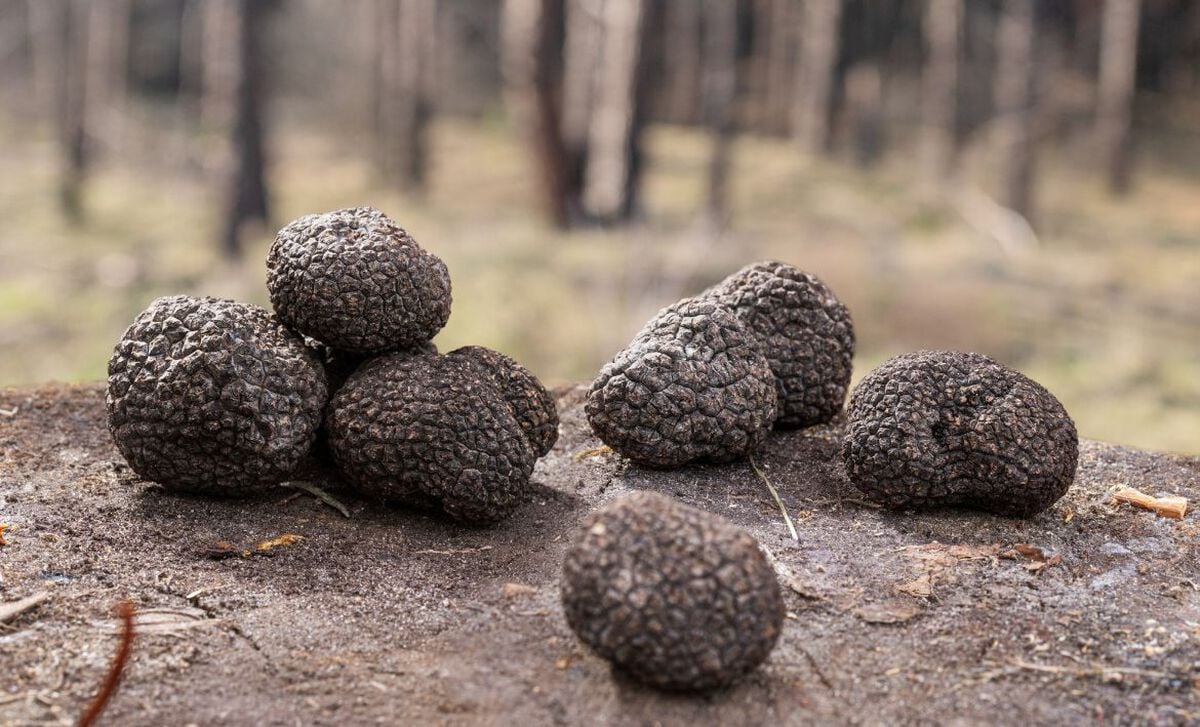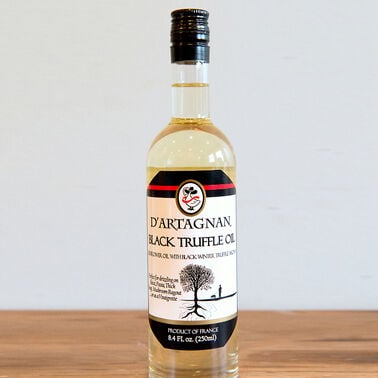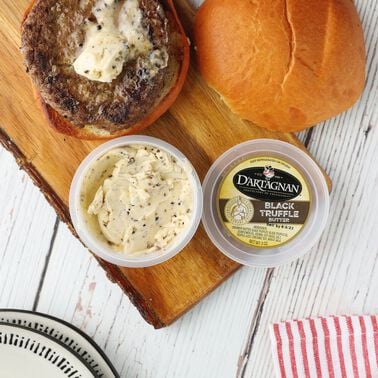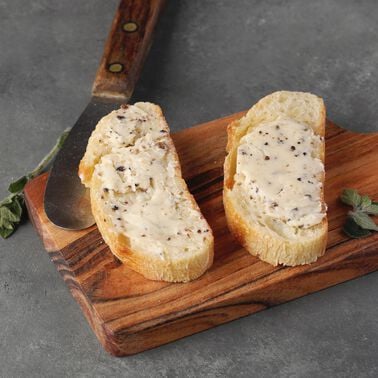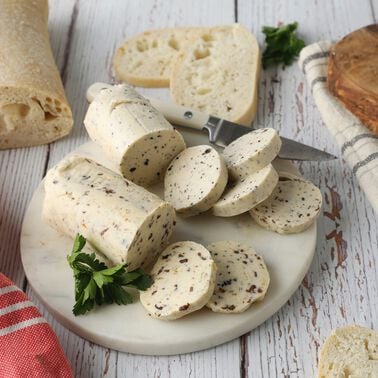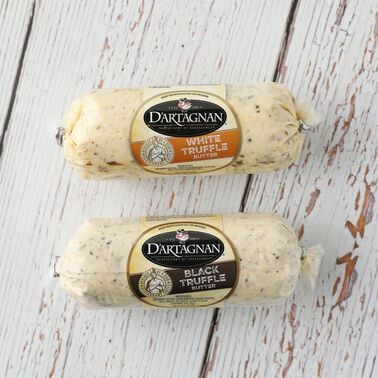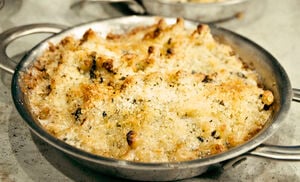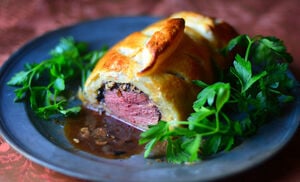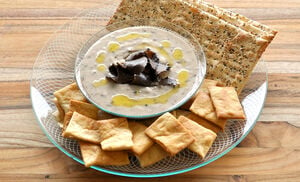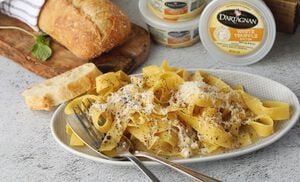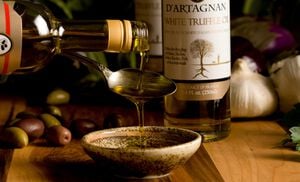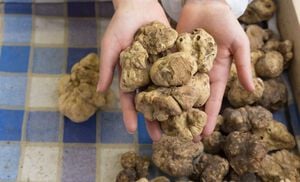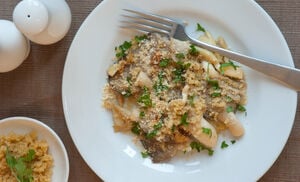What is Black Truffle & How to Use It
While there are hundreds of species of truffles, only a few are choice edibles. At D’Artagnan we focus on three European varieties of black truffles:
Tuber melanosporum,
Tuber uncinatum and
Tuber aestivum. You may know them better by their common names: black winter truffle, Burgundy truffle and summer truffle, respectively.
Read on for descriptions of each type of black truffle.
Black Winter Truffles
Tuber melanosporum, sometimes called the Perigord truffle, after the legendary truffles of the Perigord region of France. Tuber melanosporum does grow in other countries, so this moniker is somewhat misleading.
Season: The black winter truffle is found in the wild throughout Europe from November through February, though the season can vary slightly.
Recently, the black winter truffle has been successfully cultivated in Australia; since their winter is June through August, we can now enjoy winter truffles all summer.
Characteristics: Dark, robustly-veined flesh that appears almost black-purple, with the strongest flavor and aroma of all the black truffles. Notes of cocoa, earth, and tannins.
Culinary Uses: Slice paper-thin with a mandoline or truffle shaver. These thin shavings can be placed under the skin of a chicken, turkey, duck, or other game bird before roasting. Layer in a foie gras terrine, or try the classic recipe for Tournedos Rossini, a filet mignon with foie gras and truffles on top. Lay fresh slices on cooked beef, pork, or game meats like wild boar or venison. Grate truffles into wine or cream-based sauces, or shave them onto cooked pasta, scrambled eggs, or potato dishes. Or try our Black Truffle Ice Cream recipe, which is excellent for using black winter truffles in the summer, and makes an elegant finish to a special dinner.
Burgundy Truffles
The common name for Tuber uncinatum comes from the region famous for producing it: Burgundy, France. Though it grows more widely than any other truffle species, from Spain to Eastern Europe, as far north as Sweden, and as far south as North Africa, it is often known simply as the “Burgundy truffle.”
Season: Harvested from September to December.
Characteristics: The Burgundy truffle has pointed, diamond-shaped “warts” on the skin. The flesh is a chocolate-brown color lighter than the winter truffle, with a more nuanced aroma and taste. Nutty notes, with caramel and hints of earth.
Culinary Uses: Burgundy truffles should be enjoyed raw, or slightly warm, shaved over pasta, risotto, potatoes, with cheese dishes, and creamy soups or sauces. Our easy recipe for truffle honey makes an unusual accompaniment for cheese or charcuterie.
Black Summer Truffles
Tuber aestivum, the mild summer truffle is at the other end of the spectrum from the intense black winter truffle. Found in central and northern Italy and Spain, especially common in Eastern Europe, and throughout Europe.
Season: Harvested from May to September.
Characteristics: Black on the outside, with pale flesh, ranging from cream to grey as the truffle matures. More delicate flavor than either the Burgundy or the black winter truffle. Notes of hazelnut and caramelized cream. Prized for their firm, crunchy texture, and bite.
Culinary Uses: Feel free to use liberally, as the summer truffle is less expensive than the other black truffles. Julienne and add to a salad. Shave thinly and serve raw or slightly warmed to protect the delicate flavor. Layer truffle flavors by using truffle butter or truffle oil in your recipe, and fresh shavings of summer truffle as an accent. Check our Truffle Garlic Mashed Potatoes recipe or Truffle Grits with Ham recipe for tasty examples.
Storing Truffles
Once a fresh truffle is out of the ground, it doesn’t keep long. To best preserve your truffle, wrap it in a paper towel, put in an airtight plastic container, and set it in the refrigerator. Do not clean the truffle until you are ready to use it. Avoid condensation and humidity which can cause rot. If you wish, store the truffle with eggs in the refrigerator to impart its flavor into the eggs. Be sure the shells are perfectly dry. Do not store in dried rice, as the rice dehydrates the truffle. Allow truffles to come to room temperature before using.
